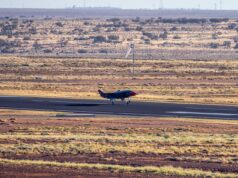A pair of Royal Australian Navy minehunters have departed Sydney for a three month deployment to North-east Asia, the first such deployment in over seventy years. The deployment comes amidst a major shift in focus for the service as it looks to refocus on Asia after decades in the Middle East.
HMAS Huon and HMAS Gascoyne make up the deployment. The two ships are both of the Huon class, the Australian variant of the popular Italian designed Gaeta class. The Navy has six of the vessels, though only four are active in the fleet at any one time. Despite being some of the most capable minehunters in the region the vessels have largely spent the last decade providing on-and-off support to the patrol boat fleet.
Speaking at their departure from HMAS Waterhen in Sydney, Commander Australian Fleet, Rear Admiral Jonathan Mead said:
“It is a great Navy day. These Minehunters are the first of their type to deploy to the region in more than 70 years and the ships’ crews are looking forward to the trip.”
The deployment will involve a variety of operations with regional allies to test mine warfare procedures and will also include the regular sequence of port calls and diplomatic engagements. “It is a great opportunity to showcase our skills and work closely with regional Navies,” RADM Mead said.
Their departure comes with debate over the role of the navy ramping up, with new Chief of Navy Vice Admiral Mike Noonan using his first public comments to suggest that Australia’s focus on the Middle East may soon be coming to an end.
Speaking to ABC News he highlighted the “distinguished time” the Navy had had in the Middle East and the wide number of lessons they had learned over the past three decades.
“The lessons we have learned from operating in waters far from home are being applied equally as we help our own very close neighbours and we provide capacity within our own navy to do more within the region.”
The recent return of HMAS Warramunga from a nine month tour in the Middle East represented the 66th individual ship deployment since 1990 when Australian warships were first deployed following the Kuwait Invasion.
While her drug seizures were record breaking, an estimated $2 billion being captured and destroyed, many are questioning their benefit to Australia’s strategic interest, with most of the drugs bound for European cities and greater needs closer to home.
There will now be a few months wait until the 67th arrives, Australia already having reduced its Middle East commitment to only nine months from what was a year round presence. With the Hobart class destroyers still in workup and the Anzac class frigates increasingly being required to escort the new Canberra class helicopter carriers on deployments such as Indo-Pacific Endeavour hull numbers are gradually becoming tighter for the fleet.
Regional attention in Asia has been driven by China’s activities in the South China Sea and the evolving North Korea situation, though Australia’s primary concern comes from Beijing’s growing influence in the Pacific island states such as Tonga and Vanuatu. The latter of which has recently been speculated as a possible host site for a new PLAN naval station.
The move has been welcomed by commentators including the University of Canberra’s Director of National Security, and former Army chief, Peter Leahy.
“I think the Admiral’s comments about the Middle East and the navy are sensible and need to be considered very carefully,” Mr Leahy told the Saturday AM program.
“Our region is more important than the Middle East and other regions where we’ve been active for so long.”
Other commentators have cautioned against a hasty withdrawal from the Middle East, noting the region’s penchant for heating up every few years and the risks of losing the valuable operational and regional knowledge built into the service from multiple tours in the area.











The RAN needs more than 6 minehunter/sweepers, especially if 2 are in reserve.
the RN have a few spare ones laid up that could be sold
We did a deployment up to SE Asia when i was on HMAS Hawkesbury (Minehunter) and that was only 16 years ago. Maybe the Admirals need to do a bit of research before they say anything publicly.
Dan01 – North East Asia and South East Asia are two different places.